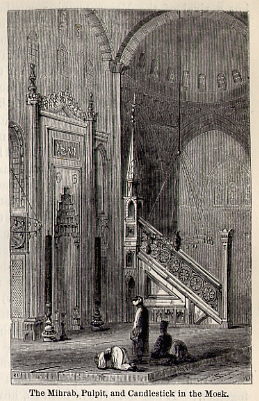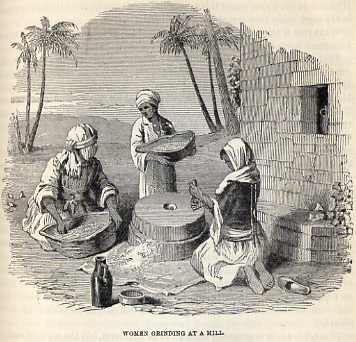
I have recently published an article in a volume edited by Ian Netton, entitled Orientalism Revisited: Art, Land and Voyage (London: Routledge, 2013, pp. 187-204). I provide the introductory paragraphs below.
Orientalism and Bibliolatry:
Framing the Holy Land in 19th Century Protestant Bible Customs Texts
“The Orient was almost a European invention, and has been since antiquity a place of romance, exotic beings, haunting memories and landscapes, remarkable experiences.†Edward Said, Orientalism, 1979
“In a word, Palestine is one vast tablet whereupon God’s messages to men have been drawn, and graven deep in living characters by the Great Publisher of glad tidings, to be seen and read of all to the end of time.†William M. Thomson, The Land and the Book, 1859
This essay begins with a famous opening phrase from Edward Said’s Orientalism not because there is a need to validate or dispute it, but because of what it leaves out. Indeed, Said’s caveat of “almost†is telling, since his text only describes the “Orient†invented through the writings of Western writers. What is remarkable about Said’s styling of the Orient as a form of politicized discourse is that the most important part of this invention is missing: the Orient invaded by Napoleon is also the Holy Land, the “vast tablet,†as American missionary William Thomson phrases it, which brings the Bible to life. Napoleon may have initiated Western imperialist ambitions in this Holy Land, but the ultimate failure of his military mission stands in stark contrast to the perpetual array of Christian pilgrims, scholars and missionaries who visited this holiest of Holy Lands for Christians and Jews. Absent from Said’s text is the genre that was most widely read in 19th century Europe and America, specifically Holy Land travel texts that cited contemporary customs and manners of Arabs and other groups encountered as illustrations of Bible characters for popular consumption, especially among Protestants.
Said’s genealogy of the discourse he identifies as Orientalism is a thoroughly academic one. Although he speaks of Biblical text and Biblical lands as part of the “disparate realms†that this discourse encompasses, there are in fact no travel accounts by Protestant Biblical scholars nor any of the vast amount of texts about the 19th century archaeological discoveries claimed to offer confirmation of Bible history.(1) Said’s oblique references to the Bible indicate he was unaware of the extent to which devout Protestant travelers believed accurate information about the local cultures and their history would validate their interpretations of the Bible against the nascent literary critique of Biblical literalism. His discussion of the Sanskrit scholars Anquetil-Duperron and William Jones is preceded by the notion that the efforts of these two scholars were “made to invade the Orient by stripping it of its veils and also by going beyond the comparative shelter of the Biblical Orient.â€(2) This shelter, however, was where most of the travel was conducted in the 19th century at a time when the so-called Bible lands were not under European control. It has been estimated that at least 2,000 individuals recorded their visits to Palestine alone between 1800 and 1870.3 While the majority of these authors reflected a Christian bias against the dominant religion of Islam in the Holy Land, they also viewed the current inhabitants as a kind of “ethnographic” window for Biblical interpretation.

Said’s sweeping generalization of a recognizable Orientalist discourse from Aeschylus to Karl Marx (and indeed to Henry Kissinger) has been criticized as inventing an “Orientalism in reverse.â€4 To the extent that anyone teaching, writing about or researching the so-called Orient is part of this ideological trajectory, as Said claims, the usefulness of the concept is diminished. Two millennia worth of texts, starting before an imaginary European space had evolved, reflect not only the universal prejudices of ethnocentrism but also a wide range of individual variation. The polemical claim that all of the “generous number of books†selected by Said represent a specific “Western style for dominating, restructuring, and having authority over the Orient†becomes through his mode of rhetoric an equally invented style stemming from the textual attitude of its author.5 More than three decades after Said’s important, but flawed, intellectual reconstruction of Orientalism, the discussion is shifting to fleshing out the nuances of an admittedly imagined East vs. West dichotomy. My aim in this essay is to analyze a secret sharer of Said’s Orientalism, the Bibliolatry of 19th century Protestant Holy Land and Bible Customs texts…
—-
1 Edward Said, Orientalism (New York: Vintage Books, 1979), p. 4.
2 Edward Said, Orientalism, p. 76.
3 Yehoshua Ben-Arieh, “The Geographical Exploration of the Holy Land,†Palestine Exploration Quarterly, 1972), p. 83. An early, but comprehensive, bibliography of travel accounts of Palestine is provided by Reinhold Röhricht, Bibliotheca Geographica Palaestinae (Berlin: H. Reuther’s, 1890).
4 Edward Said, Orientalism, p. 76; Sadiq Al-‘Azm, “Orientalism and Orientalism in Reverse,†(in Rothschild, editor, Forbidden Agendas: Intolerance and Defiance in the Middle East, London: Al Saqi, 1984), pp. 349-376. Al-’Azm’s essay was first published in Khamsin (8:5-26, 1981) and is also reprinted in Alexander L. Macfie, editor, Orientalism: A Reader (New York: NYU Press, 2000), pp. 217-238).
5 Edward Said, Orientalism, pp. 2-3. I published a survey of the debate over Said’s Orientalism in my Reading Orientalism: Said and the Unsaid (Seattle: University of Washington Press, 2007).